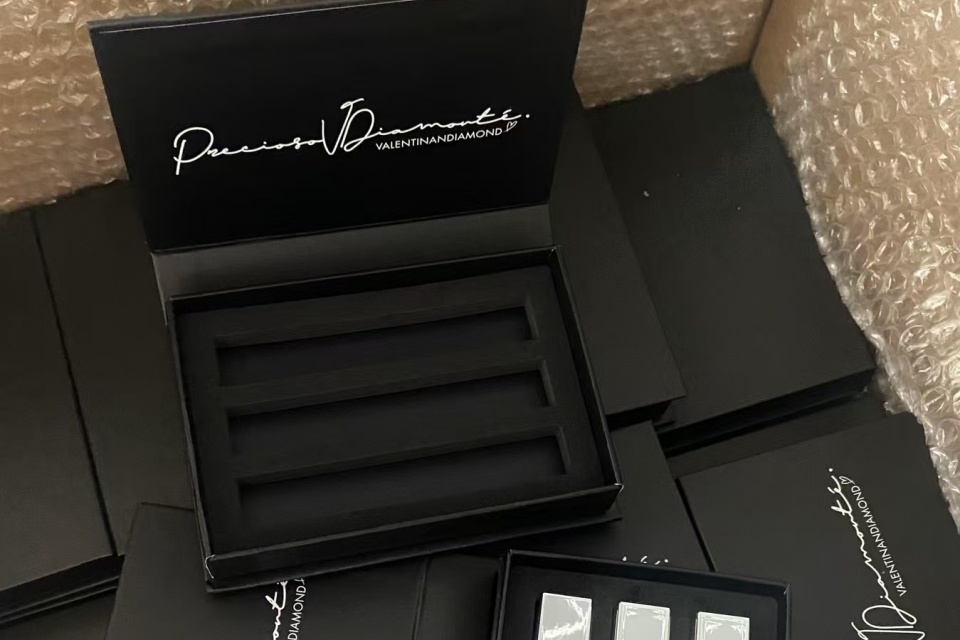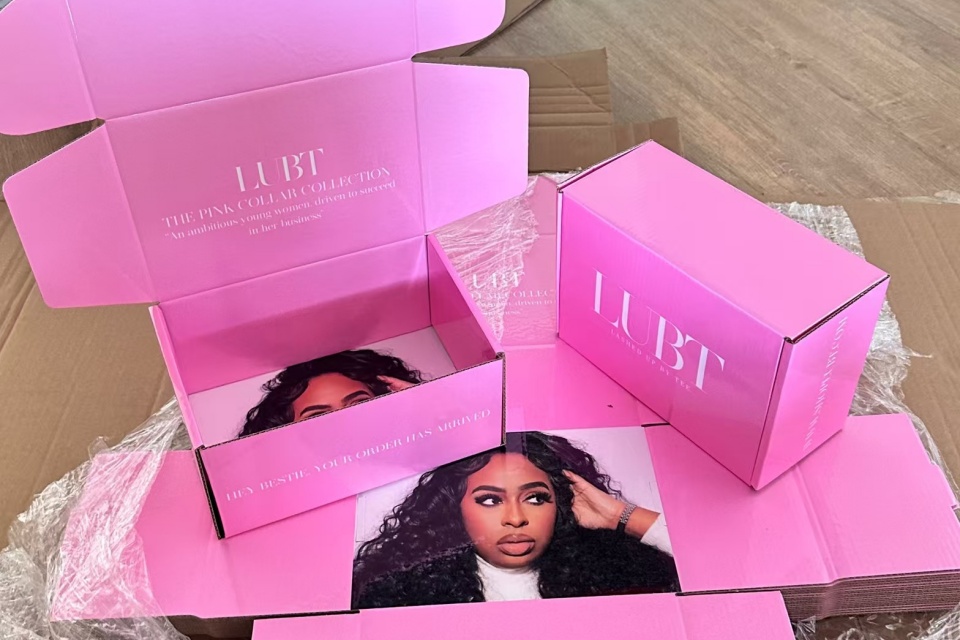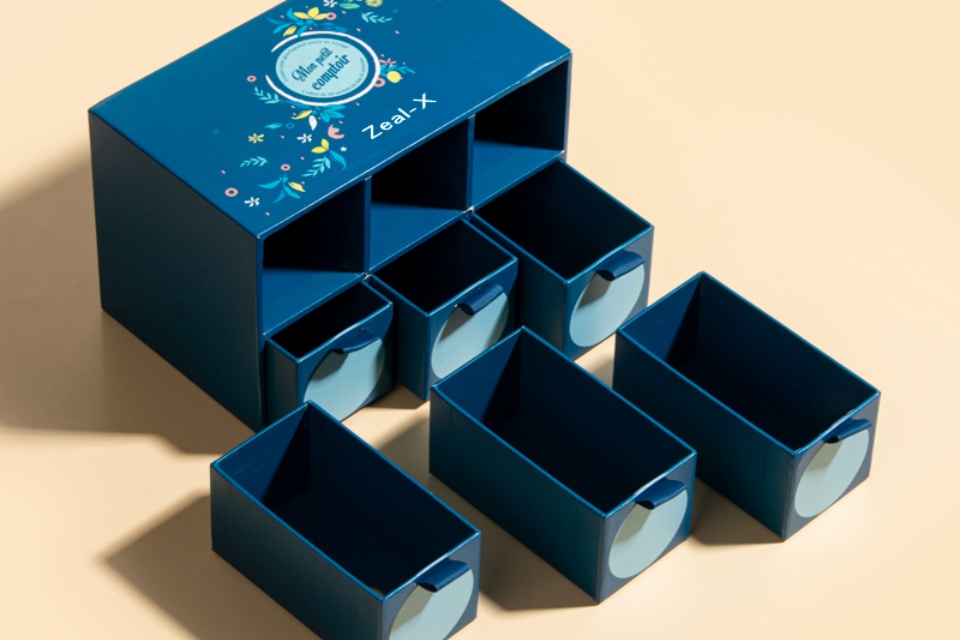Industry News
Top 5 Best Materials Revealed for Cosmetic Gift Boxes
Top 5 Best Materials Revealed for Cosmetic Gift Boxes
Summary
Top 5 Best Materials Revealed for Cosmetic Gift Boxes is an article that explores the most effective materials used in the packaging of cosmetic gift boxes, emphasizing their unique properties, sustainability, and consumer appeal. As the cosmetics industry evolves, brands increasingly prioritize not only the aesthetic qualities of their packaging but also its environmental impact. This focus is particularly crucial as consumers demand more eco-friendly options, compelling manufacturers to rethink traditional packaging choices.
Among the top materials discussed are cardboard, Kraft paper, rigid cardboard, glass, and bamboo, each offering distinct advantages in terms of durability, customization, and sustainability. Cardboard is lauded for its versatility and recyclability, making it a popular choice among brands looking to enhance their eco-friendly image while maintaining functionality and visual appeal. Kraft paper, recognized for its rustic charm and customization options, serves as an excellent alternative that aligns with organic product branding. Rigid cardboard boxes stand out for their luxurious feel and premium presentation, particularly suited for high-end cosmetics.
Glass packaging is increasingly favored for its sustainability and ability to convey luxury, although its weight and fragility can present shipping challenges. Bamboo emerges as a strong contender due to its rapid renewability and biodegradability, appealing to environmentally conscious consumers seeking unique and natural aesthetics. Despite the benefits of these materials, the article also addresses prominent controversies, particularly surrounding plastic's environmental impact, prompting brands to innovate toward more sustainable alternatives. Ultimately, the selection of materials for cosmetic gift boxes reflects broader trends in consumer behavior and environmental awareness, making this topic a vital consideration for brands in the competitive cosmetics market.
Material 1: Cardboard
Cardboard is one of the most prevalent materials used in the production of cosmetic gift boxes due to its versatility and eco-friendliness. This material is highly regarded for its ability to be molded into various shapes and sizes, making it suitable for a wide range of cosmetic products, from small containers like lip balms to larger items like cosmetic gift sets. The inherent rigidity of cardboard ensures that products are well-protected during transport, reducing the risk of damage, which is particularly important for delicate items such as cosmetics.
In terms of sustainability, many cardboard options are made from recycled materials, contributing to a reduced environmental impact. The recyclability of cardboard also varies depending on the specific type used, making it essential for manufacturers to choose materials that meet eco-friendly standards. Customization is another significant advantage of cardboard, as it can easily be printed or stamped with designs, allowing brands to add a personal touch that resonates with consumers. This customization can enhance brand visibility and create a memorable unboxing experience for customers.
Aesthetic appeal is another benefit of using cardboard for gift boxes. Cardboard can be finished in various ways, including matte, glossy, or textured surfaces, offering a wide array of visual options to suit different occasions. Additionally, it can be decorated with ribbons, stickers, or wrapping paper, encouraging creativity in presentation. Such features make cardboard gift boxes ideal for various events, from birthdays to holidays, catering to diverse consumer preferences.
Moreover, the growing e-commerce industry has further elevated the popularity of cardboard gift packaging. With the demand for aesthetically pleasing and functional packaging on the rise, cardboard provides an attractive solution that is both reusable and durable. As businesses increasingly prioritize sustainability, cardboard stands out as a practical and responsible choice for cosmetic gift boxes, aligning with eco-friendly practices while meeting consumer expectations for quality and design.
Material 2: Kraft Paper
Kraft paper is a highly regarded material in the packaging industry, particularly for cosmetic gift boxes, due to its durability and eco-friendliness. Made from recycled wood fibers, Kraft paper is both cost-effective and environmentally sustainable, making it an ideal choice for brands that emphasize organic and natural products. The characteristic brown appearance of Kraft paper provides a natural and rustic aesthetic, which many consumers appreciate for its suitability in various contexts, such as outdoor weddings or eco-themed events.
Customizability and Functionality
One of the significant advantages of Kraft paper is its high level of customizability. It can be adapted for different product types, including handcrafted and luxury items, ensuring that the packaging not only protects the contents but also enhances their perceived value. Kraft paper gift boxes are particularly effective in preventing damage to delicate items, thereby preserving the integrity of the contents within. The lightweight nature of Kraft paper also makes it advantageous for shipping, reducing transportation costs while minimizing environmental impact.
Design Versatility
In addition to its practical benefits, Kraft paper allows for a wide range of design possibilities. It can be easily printed on, stamped, or treated to achieve various finishes, allowing for personal expression and branding opportunities. The material can be shaped into different configurations, from simple wrap designs to complex, decorative boxes, making it a versatile choice for luxury packaging needs.
Material 3: Rigid Cardboard
Rigid cardboard, also known as set-up boxes, is a popular choice for cosmetic gift packaging due to its sturdy construction and premium aesthetic. Made from durable materials such as paperboard or chipboard, rigid boxes provide a luxurious feel that elevates the presentation of high-end products, making them particularly suitable for cosmetics and other luxury gifts.
Advantages of Rigid Cardboard
Rigid cardboard boxes offer several advantages over other packaging materials. Their sturdiness ensures that they maintain their shape and provide adequate protection for delicate items, such as perfumes or skincare products, which are often susceptible to damage during transport. Furthermore, these boxes can be customized with various finishes, such as embossing, foil stamping, or spot UV, adding an extra touch of elegance that can enhance a brand's image and appeal to consumers.
Eco-Friendliness and Sustainability
In addition to their aesthetic benefits, rigid cardboard is an environmentally friendly option, particularly when sourced from recycled materials. Brands focusing on sustainability can leverage the eco-friendly image of rigid cardboard to communicate their commitment to responsible packaging practices, aligning with the growing consumer demand for sustainable products. The use of recyclable materials in rigid boxes supports the circular economy, helping to reduce waste and promote sustainable practices in the cosmetics industry.
Customization and Versatility
Rigid cardboard boxes are highly versatile and can be molded into various shapes and sizes to suit different products. This flexibility makes them ideal for creating bespoke packaging solutions that meet the specific needs of luxury cosmetic brands. The ability to print vibrant designs or use specialty papers enhances the visual appeal of these boxes, further enticing consumers and enhancing the overall unboxing experience.
Material 4: Glass
Glass packaging is increasingly favored in the cosmetics industry due to its numerous advantages, particularly in conveying a sense of luxury and sustainability.
Advantages of Glass Packaging
Sustainability
One of the standout features of glass is its sustainability. Glass is 100% recyclable and can be reused indefinitely without losing its clarity or purity, significantly reducing the environmental footprint associated with cosmetic packaging. This eco-friendly characteristic appeals to a growing market of environmentally conscious consumers, making glass an attractive option for brands aiming to enhance their green credentials.
Luxury Appeal
The use of glass in cosmetic packaging elevates the perceived quality and value of the products it contains. Its sleek, transparent appearance suggests sophistication and elegance, which is particularly important for high-end skincare, perfumes, and makeup products. Brands can further enhance this luxury appeal through innovative designs, such as custom-shaped bottles and decorative finishes.
Chemical Stability
Glass is chemically inert, meaning it does not react with the contents it holds. This property is especially crucial for organic and natural cosmetics that require optimal protection from contamination and oxidation. As a result, glass is considered a safe choice for preserving the integrity of sensitive formulations.
Considerations and Challenges
Despite its many benefits, glass packaging does come with some drawbacks. Its weight can increase transportation costs and emissions, making it less practical for long-distance shipping. Additionally, glass is fragile and can shatter, posing challenges for companies that prioritize durability and portability.
Innovative Design Trends
In response to market demands, cosmetic companies are exploring innovative and customized glass packaging solutions. These include travel-friendly designs and unique shapes that not only stand out on shelves but also enhance the user experience. Brands are increasingly adopting glass packaging to reinforce their commitment to sustainability while also meeting consumer expectations for quality and design.
Material 5: Bamboo
Bamboo has emerged as a highly favored material in the cosmetic packaging industry, particularly for gift boxes, due to its sustainability and distinct aesthetic appeal. As a fast-growing and renewable resource, bamboo offers an eco-friendly alternative to traditional packaging materials, aligning perfectly with the increasing consumer demand for sustainable products.
Benefits of Bamboo Packaging
Environmental Sustainability
Bamboo's rapid growth and minimal resource requirements make it a highly sustainable material. Utilizing bamboo in packaging reduces reliance on non-renewable resources, thereby minimizing environmental impact. Its biodegradability is another critical advantage; unlike conventional plastics, bamboo breaks down naturally, contributing to waste reduction and pollution control, which resonates with the global push for more sustainable practices.
Aesthetic Appeal
Bamboo packaging presents a unique, organic appearance that appeals to brands promoting natural and organic products. This aesthetic adds an element of earthiness and authenticity to the product's presentation, enhancing its marketability among environmentally conscious consumers.
Strength and Durability
Despite being a natural material, bamboo is remarkably strong and durable. This quality ensures excellent protection for products, maintaining their integrity and quality over time. The customizable nature of bamboo allows brands to create distinctive packaging that stands out on shelves, further enhancing its attractiveness for cosmetic gift boxes.
Considerations and Challenges
While bamboo packaging has numerous advantages, it is essential to acknowledge some challenges. Bamboo may require additional materials, such as plastic or silicone, for applications needing airtight seals, which could increase the overall carbon footprint. Brands must balance these considerations while leveraging bamboo's eco-friendly properties to appeal to sustainability-oriented customers.
Material 6: Plastic
Plastic is one of the most widely used materials in cosmetic gift boxes due to its versatility and cost-effectiveness. It can be manufactured in various forms, including bottles, jars, tubes, and containers, making it suitable for a range of cosmetic products. The lightweight nature of plastic also contributes to reduced shipping costs and ease of handling, which is a significant advantage in the cosmetics industry.
Advantages of Plastic
One of the primary benefits of plastic cosmetic packaging is its durability. Plastic containers are resistant to breakage, which ensures that the products inside remain protected during transportation and storage. Additionally, plastic can be designed to be either transparent or colored, allowing brands to enhance their visual appeal while maintaining product integrity. Furthermore, many types of plastic used in cosmetic packaging, such as PET and HDPE, are recyclable, which aligns with the growing demand for sustainable practices in the beauty industry.
Environmental Considerations
Despite its advantages, the use of plastic in cosmetic packaging has faced scrutiny due to environmental concerns, particularly regarding plastic waste and pollution. Studies estimate that billions of pieces of plastic pollute the oceans, prompting the cosmetic industry to explore alternative materials and sustainable practices. Innovations such as post-consumer recycled (PCR) plastics and biodegradable options are being introduced to mitigate the environmental impact of plastic packaging. Brands are increasingly aware that aligning with eco-conscious consumer expectations is crucial for maintaining market relevance.
Comparison of Materials
When selecting materials for cosmetic gift boxes, various factors must be considered, including functionality, durability, aesthetic appeal, and sustainability. Each material offers unique advantages and challenges, influencing both brand image and consumer perception.
Glass: The Classic Choice
Glass has long been a favored material in the beauty industry due to its premium feel and protective qualities. It is impervious to air, light, and moisture, making it ideal for preserving the integrity of cosmetic products. Moreover, glass is recyclable and can be reused, aligning with the increasing consumer demand for sustainable packaging solutions. However, its fragility and weight may pose challenges in terms of shipping and handling costs.
Metal: Durable and Stylish
Metals like aluminum and tin offer a vintage aesthetic that can differentiate products in a competitive market. These materials are durable and can be designed to enhance brand identity through customization options. However, care must be taken to ensure that metal containers do not react adversely with specific ingredients, which can compromise product quality. As a sustainable choice, metal is often viewed as a more eco-friendly option compared to traditional plastics.
Paper and Cardboard: Eco-Friendly Options
Paper and cardboard are commonly used in cosmetic packaging due to their lightweight and biodegradable nature. They can be easily customized with printing or embossing to create an attractive presentation. However, while they are more sustainable, their protective qualities are generally less robust than glass or metal, requiring careful design to ensure product safety during transport and storage. Additionally, the use of post-consumer recycled (PCR) materials is gaining traction, further enhancing the sustainability credentials of paper packaging.
Plastics: Versatile but Controversial
Plastic remains a popular choice for packaging in the beauty sector due to its versatility and cost-effectiveness. Polyethylene terephthalate (PET) is particularly favored for its lightweight and shatterproof properties, making it suitable for various product forms. However, the environmental impact of plastic waste is a significant concern, driving brands to seek more sustainable alternatives. Innovations such as biodegradable plastics and upcycled materials are emerging to address these issues.
Wood: Luxury and Reusability
Wooden boxes are often associated with luxury and sophistication, providing excellent durability and protection for high-end cosmetic products. They can be customized through engraving or painting, adding a personal touch that enhances the unboxing experience. Although wooden packaging tends to be more expensive, its reusability can provide long-term value for both consumers and brands. However, sourcing sustainable wood materials is essential to maintain an eco-friendly image.
Trends in Material Selection
The selection of materials for cosmetic gift boxes is increasingly influenced by various factors that prioritize sustainability, cost-effectiveness, and consumer appeal.
Sustainability as a Core Value
As consumers become more environmentally conscious, sustainability is now a fundamental expectation rather than an optional feature. Brands are gravitating towards materials such as recycled paper, bioplastics, and metals like aluminum and stainless steel, which are preferred for their eco-friendly characteristics and recyclability. Studies indicate that a significant majority of consumers (85%) prefer brands that actively address climate change and environmental issues, driving companies to innovate in sustainable packaging solutions.
Cost and Budget Considerations
Material costs are a critical aspect of packaging design. Brands often balance desired aesthetics with budget constraints, opting for economically viable options without compromising on quality. For instance, while paperboard remains the most economical choice for high-volume production, rigid boxes offer a premium feel at a higher cost, appealing to luxury markets. Additionally, lightweight materials can significantly reduce shipping costs, making them attractive for e-commerce businesses.
Design and Consumer Appeal
The impact of packaging design on consumer purchasing decisions cannot be overstated. Eye-catching, aesthetically pleasing packaging can influence buyers to choose a product, prompting brands to consider not just functionality but also visual appeal. Aspects such as color psychology and innovative designs using unique materials, like bamboo and biodegradable cushioning, are gaining traction as they resonate with eco-conscious consumers.
Functional Innovations
The functionality of packaging is becoming increasingly vital, with brands exploring refillable and reusable packaging options to minimize waste and enhance customer loyalty. By integrating user-friendly features and interactive elements, such as QR codes for product information, brands are elevating the consumer experience while supporting sustainability goals.
Categories
Latest News
Contact Us
Contact: Aaron Lee
Phone: +8613570866244
Tel: +8675529490260
Add: Li Songlang 2nd Industrial Zone,No.18,FengTang Rd,Guangming New District


